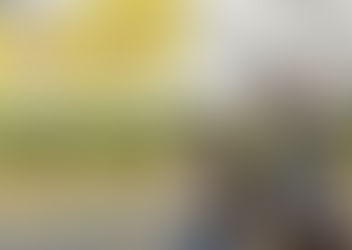Why a Pollinator Garden?
- Pollinator Project RV

- Apr 9, 2023
- 4 min read
Updated: Jul 30, 2023

by Kristina Lefever
at the request of the Medford Garden Club

Scenic vistas of orchards, farms, ranches, beautiful mountains and valleys full of wildflowers ..... we must be in Southern Oregon! Although, if you have lived here for more than a few years, you have seen the changes - open land giving way to places for human habitation, new businesses, city infrastructure, and more.
This article is to offer a reason, and a way, and yes, a hope, that we as humans can help offset these changes for the long-term sustainability of this beautiful place where we live. My premise is that gardens, specifically pollinator gardens, are even more important now, because they provide not only a much needed respite for the remaining populations of pollinator species, but also a place for them to live, survive, and thrive in an ever shrinking larger landscape. It is becoming more and more apparent that gardens can no longer serve only the interest of “us” - in fact, we must think about how our outdoor spaces can serve other creatures who live here, too, before it's too late.
And not just too late for the bees and the butterflies and the birds who depend on these plants, especially the plants that are native to this place, but "too late" for us, too. Because, without these tiny, almost invisible creatures, our world will become bereft of not only the beauty that we see around us in the landscapes of southern Oregon, but our food crops will suffer as well. Consider the madrone and the cherry tree, the manzanita and the tomato, the yarrow and the carrot, the honeysuckle and the squash - all of these flowers must be pollinated in order to set seed and reproduce. (Photo of Tarweed in seed and flower)

In fact, 85% percent of all flowering plants, including trees and other native plants, depend on bees, flies, wasps, butterflies, moths, and hummingbirds to be their partner in reproduction. Especially those hard-working bees, who help provide us with one out of every three bites of food.
Aah, honey bees, you think! Yes, brought over in the 1600's by the European settlers, honey bees, although not native to this country, are now part of our landscape and beloved for the honey they make. Honey bees are efficient pollen collectors – they can make honey to keep their large hive alive all year long. They are also easily ‘managed’, and so can be carried to various locations.
Did you know that there are almost 700 species of bees in Oregon alone?
In fact, many native bee species are better pollinators than the ubiquitous honey bee - they do collect pollen, but not as much, and for a shorter time and for a much few number of offspring, and most species fly as adults only at certain times of the year (mason bees in the spring, leaf cutters and long horn bees in the late summer, etc). Because of the way they collect pollen, native bees tend to be 'messy', leaving behind lots of pollen as they visit the various flowers of both native plants and food crops.
It takes about 250 mason bees to pollinate the same amount of fruit trees as 20,000 honey bees. On the other hand, a mason bee might lay 30 eggs in her 6-week lifetime, but a honey bee can lay 20,000 eggs in a day.

But it's not just about pretty flowers in our gardens - there is more to a successful pollinator garden than meets the eye, because there are more than bees to consider. The 'flying flowers' (butterflies) eat twice - in both the caterpillar stage (yes, we want them to eat our plants!) and in the adult stage sipping nectar. The more native trees, shrubs, herbaceous plants, and grasses we have in our landscape, the more caterpillars, and thus butterflies and moths we will see - although it may take years for them to return. (Photo of mason bee by Kyle Poling)

Consider that moth and butterfly caterpillars are THE food source for baby birds. Did you know that it takes about 6,000 caterpillars to raise one clutch of chickadees?
Consider that the pollinators and plants of every ecoregion began evolving together over 170 million years ago, with the emergence of the first species of flowering plants. With over 3,600 species of native plants, Oregon has a huge diversity of native pollinators. And many are native to southern Oregon!
(Photo of just a few of the almost 50 American Lady butterflies we raised in our nursery on native Pearly Everlasting this past summer - see our blog about that wonderful adventure!)
I'll leave you with a recommendation to read one of my favorite books – perhaps the reason I am writing this article. Because when I learned, from Dr. Doug Tallamy, that a beautiful gingko tree in this country, not its native China, will support 1 species, but an oak, native to this land, supports over 500 species, I knew things had to change. Pick up a copy of Bringing Nature Home, or any of Dr. Tallamy's books to learn more.
Join me in this fascinating journey of discovery, applicable to right where we live. There are many resources to learn more about why and how to grow a native pollinator garden, or at the least, to add natives to your garden, and help serve our native pollinators and the ecosystems that they support.
"In the past, we've asked one thing of our gardens: that they be pretty. Now they have to support food webs, sequester carbon, feed pollinators, and manage water. We have to find ways for Nature to thrive in human dominated landscapes."
~Doug Tallamy
Resources
Pollinator Project Rogue Valley https://www.pollinatorprojectroguevalley.org/protect-pollinators
Native Plant Society Oregon: https://www.npsoregon.org
Klamath Siskiyou Native Seeds: https://klamathsiskiyouseeds.com
The Understory Initiative: https://understoryinitiative.com
Jackson County Master Gardeners at OSU Extension: https://extension.oregonstate.edu/mg
Plant Oregon: https://www.plantoregon.com/
Visit local native plant gardens:
- Britt Woodlands, Jacksonville (jvwoodlands.org)
- Pollinator Project Rogue Valley’s demonstration garden, 312 N. Main St., Phoenix
- Jackson County Master Gardeners, OSU Extension, 569 Hanley Rd, Central Point
- North Mountain Park Nature Center, 620 N. Mountain Avenue, Ashland
Kristina Lefever is a native pollinator and plant advocate, and Chief Volunteer (and president) of Pollinator Project Rogue Valley. Reach her at pollinatorprojectroguevalley@gmail.com. Photos by Kristina unless noted.




























Comments